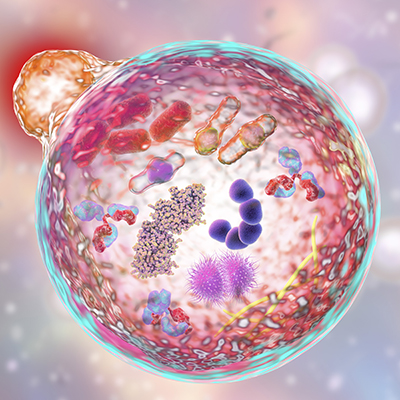April 28, 2023 -- University of California Los Angeles (UCLA) researchers have identified a potential broad-spectrum antiviral agent that can target multiple families of RNA viruses that continue to pose significant threats for future pandemics. The National Institutes of Health (NIH)-funded study, published Friday in Cell Reports Medicine, found that a STING agonist mitigated the debilitating effects of the chikungunya virus in mice.
The ongoing SARS-CoV-2 pandemic, which has claimed nearly seven million lives globally since it began, revealed human society's vulnerability to large-scale outbreaks from emerging pathogens. Researchers say recent epidemics, global warming, and the continuously evolving nature of the RNA genome all point to arboviruses -- viruses spread by mosquitoes -- as prime candidates for triggering the next pandemic. Worldwide, the most prevalent arboviral diseases are dengue fever, followed by chikungunya virus, Zika virus, yellow fever, Japanese encephalitis, and West Nile virus. Given the demonstrated epidemic potential of these arboviruses, researchers say finding effective broad-spectrum treatments against them is of the utmost importance.
Researchers tested a library of innate immune agonists, which work by targeting pathogen recognition receptors, and found that several antivirals inhibited these arboviruses to varying degrees. But the most potent and broad-spectrum antiviral agents identified were cyclic dinucleotide STING (stimulator of interferon genes) agonists.
The STING signaling pathway is critical for generating a robust innate immune response to pathogens. A single dose of cyclic (adenine monophosphate-inosine monophosphate), or cAIMP, a STING ligand, produced a robust host antiviral response that effectively prevented and mitigated the debilitating viral arthritis caused by the chikungunya virus in mice. Since chikungunya virus-affected individuals suffer from viral arthritis years and sometimes decades after initial infection, researchers consider this treatment modality promising. Studying transcriptional changes in the host cells revealed that cAIMP treatment reversed the harmful effects of chikungunya-induced dysregulation of cell repair, immune, and metabolic pathways.
Compared to West Nile and Zika viruses, chikungunya at the molecular level contributes to more robust transcriptional and chemical imbalances in infected skin cells called fibroblasts. This reflects possible differences in the disease pathogenesis mechanisms by viruses belonging to different families, even though all are mosquito-borne viruses.
The researchers also found that the STING agonists exhibited broad-spectrum antiviral activity against both arthropod-borne- and respiratory viruses, including SARS-CoV-2 and enterovirus D68 in cell culture models. In addition to exhibiting potent antiviral activity against members of RNA viral families, these STING agonists also hold promise in triggering immune defenses against cancer.
"The next step is to develop these broad-spectrum antivirals in combination with other existing antivirals and make them readily available in the event of future respiratory and arboviral disease outbreaks," Gustavo Garcia Jr., first author and former UCLA staff research associate, noted in a statement.
Copyright © 2023 scienceboard.net











